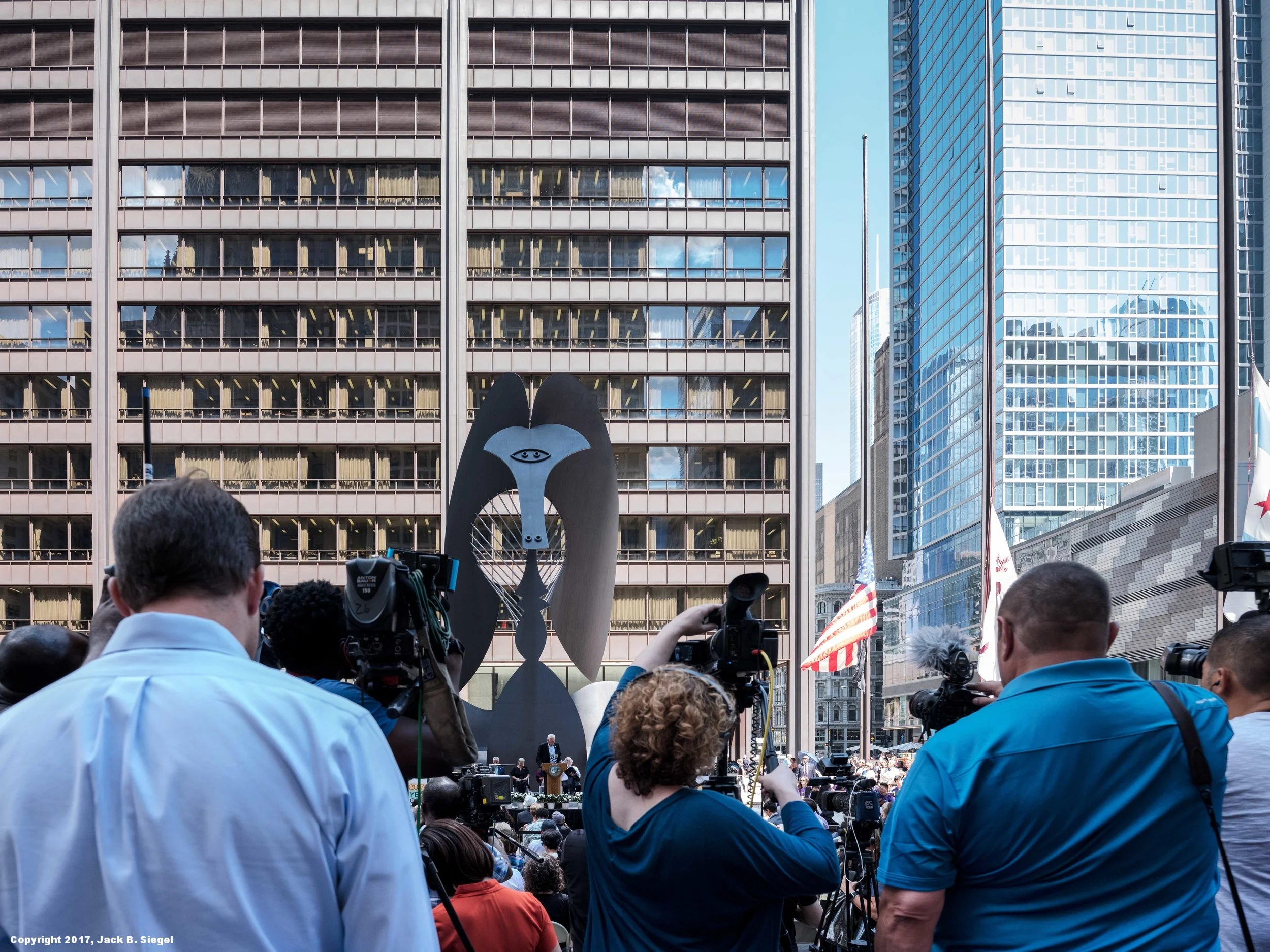Green
I’ve walked past the Sydney R. Marovitz Golf Course countless times. It is about five or six blocks north of Belmont Harbor in Lakeview. If I were golfer, it would not be my first choice for an outing. It is flat and compressed, although it does have nice lake views. With that in mind, I headed down to the South Shore Cultural Center today, which was formerly a country club for Chicago’s wealthy. The draw was the main structure, which was placed on the U.S. Register of Historic Places in 1975.
The clubhouse was originally built in 1906 based on a design by Marshall and Fox, once Chicago’s premiere architectural firm The firm was also responsible for the Drake Hotel (and the buildings adjacent to it), as well the Blackstone Hotel. If you find old postcards from the first decade of the 20th century, you will be a bit confused when you see the current clubhouse. The original was built in the Mediterranean Revival style. It was replaced in 1916 by the current structure, which relies heavily on what appears to be plaster coating. It was renovated over two decades, beginning in the early Eighties.
The club was originally founded by Lawrence Heyworth, who was a banker and the president of the Chicago Athletic Club. He envisioned it as a place for the downtown club’s membership to escape the city. Like many influential Chicagoans, Heyworth played hardball to get his way. According to the Chicago Tribune, he first enlisted the help of 17 Chicago bank presidents to finance his purchase of the 58-acre site. He then told the owners of the property surrounding the site that they would not be able to obtain bank financing to exploit their property if they did not join the project.
In its heyday, the Club hosted a number of celebrities, including Bing Crosby, Dick Powell and Joan Blondell, Will Rogers, Amelia Earhart, President William Howard Taft, and Jean Harlow. These folks stayed in the club’s luxurious suites while performing in Chicago’s Loop theatres or conducting business in the city.
The club’s membership followed what was a typical pattern. Back in the day, the surrounding neighborhood was occupied by the wealthy, which is readily apparent when driving along South Shore Drive, which has some beautiful apartment buildings. The club’s membership reflected the neighborhood, which was white and Protestant. Membership reached its zenith in 1953, at 2,000, with the membership then also including Irish-Catholics, who had been denied membership in the club’s earlier decades. The Protestants apparently made concessions as the Irish became a more powerful force in Chicago. In 1933, Edward Joseph Kennedy was the first Irish American to ascend to Chicago’s mayorship, followed by three other Bridgeport natives in succession, including Mayor Richard J. Daley. Kennedy’s ascension to power was made possible when on February 15, 1933, Chicago Mayor Anton Cermak took a bullet in Miami that had been meant for President-elect Franklin D. Roosevelt. At the hospital, Cermak is reportedly said to have told Roosevelt, “I’m glad it was me, not you.”
The parties at the club were legendary, with Paul Whiteman performing at one of the many galas. Entertainment also featured the annual Ministerial Follies, which included a blackface skit. Times have certainly changed.
As African Americans began to move into the neighborhood, the club’s membership dwindled as wealthy Whites fled the neighborhood. The club apparently considered opening membership to Jews in 1967 and then to African Americans, but it decided not to “lower the bars and relax the qualifications for membership.”. Eventually, the club ran into financial trouble, resulting in the sale of the club’s assets to the Chicago Park District in 1975 for just under $10 million. At the time, the membership had dipped to 800 members.
The club’s decline serves as a useful parable for our times. The White, Christian membership preferred what turned out to be unsustainable dominance to the club’s survival. Just like Donald Trump and his base, the club’s membership could have strengthened its finances by admitting the Other, but they chose economic decline, just as Trump and the base do today.
As reconstituted following the bankruptcy, the South Shore Culture Center still has the golf course, although there was an attempt to downsize it, which the community rejected. It also has retained a beach with views of Chicago’s signature skyline, although today it was obscured by atmospheric haze caused by our well-deserved heat spell. It also maintains the horse stables from bygone days, but as far as I could tell, those stables are now limited to Chicago Police Department horses. It remains a place for dinners, banquets and other celebrations. It also has a small theatre bearing Paul Robeson’s name. Alas, trap shooting is no longer an option.
Like the days of old, the facility still hosts an occasional celebrity, but sometimes before fame has shined its light. On October 3, 1992, the center hosted Barack and Michelle Obama’s wedding reception, following their wedding at Chicago’s Trinity United Church of Christ. For the first dance, Michells Obama picked Stevie Wonder’s “You and I.”
As I said, I am not a golfer, but if I were, I would head to what is now the South Shore Community Center, open to the public regardless of race or religion. It is a much nicer golf course than Marovitz to the north, with gently rolling fairways, lake views, and plenty of well-developed trees. Those trees, however, can be a problem for the duffers, as I witnessed. And if you don’t golf, you can go for a walk in the nature preserve or take a dip in Lake Michigan.
[Click on an image to enlarge it]
The Landmark Clubhouse (From the Front)
The Landmark Clubhouse (From the Back)
Floral Displays Abound
The Landmark Clubhouse (Upper Floors)





